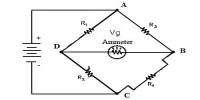As there is intensity of an electric field, it also has electric potential. Potential determines the direction of motion of a charge in an electric field and also determines the direction in which the charge will flow when two charged conductors are connected by a conductor wire. If the charge creating field is positive, some work is done against the force of repulsion if another positive charge is brought near it.
Therefore, the more positive charge is brought from a point at infinity nearer to the body, the more work will have to be done. So, within the electric field of a positively charged body, the more a point is brought nearer to the body, the more will be the quantity of potential. If any electric field created by a positively charged body and a free positive charge is placed and allowed to move freely, it would go away from the body.
Therefore, we can say that positive charge moves from higher potential to lower potential. On the other hand, negative charge moves towards positively charged body. Thus, negative charge moves from lower potential to higher potential. If the body creating the electric field is charged negatively, then some work will be done due to attraction of a unit positive charge bringing towards it.
A positive charge itself does work while coming from infinity towards a negatively charged body, which creates an electric field. As a result the charge loses energy and the potential at a point in the electric field is considered as negative.













